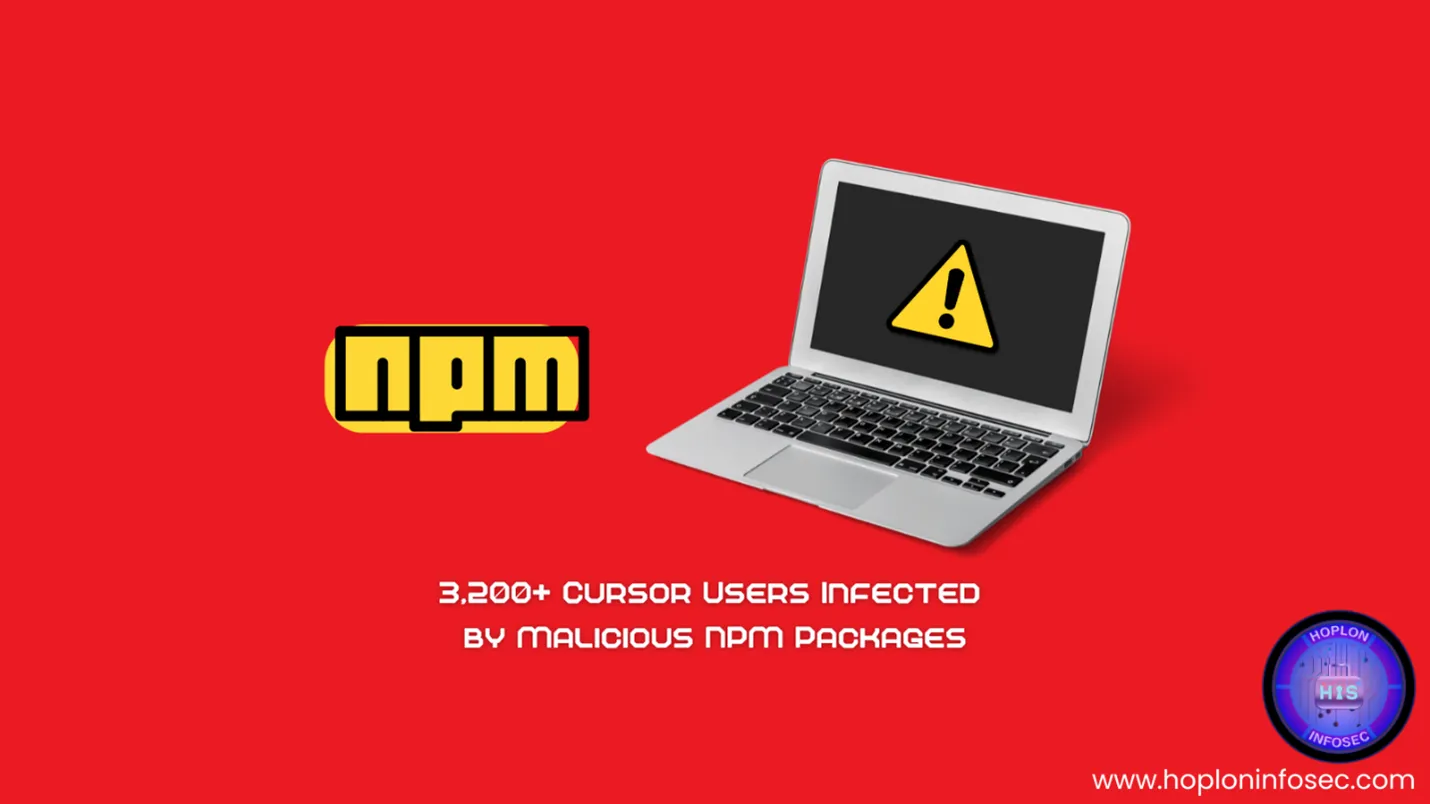In a concerning new wave of software supply chain attacks, cybersecurity researchers have identified three malicious NPM packages targeting macOS users of Cursor AI-a popular AI-powered integrated development environment (IDE). The compromised packages, named sw-cur, sw-cur1, and aiide-cur, were disguised as cost-effective tools for accessing Cursor’s premium features, luring developers with the promise of cheaper access. However, instead of delivering on that promise, the packages introduced backdoors that compromised user credentials, disabled security updates, and granted attackers persistent remote access to the victims’ systems.
The Breakdown of the Attack

Cursor AI is widely known for its integration of language models within its IDE, offering developers powerful AI-driven coding assistance. This makes it a high-value target for threat actors aiming to exploit its user base. According to vulnerability detection firm Socket, the three malicious packages were published under the usernames gtr2018 and aiide on the NPM registry. To date, they have amassed over 3,200 downloads, spreading the backdoor to numerous macOS devices.
The attack unfolded in the following steps:
Credential Harvesting
Upon installation, the malicious NPM packages immediately harvest user credentials associated with Cursor, potentially giving attackers access to sensitive information, coding projects, and even linked services.
Payload Fetching and Decryption
The packages fetch encrypted payloads from remote servers, specifically from domains like t.sw2031[.]com and api.aiide[.]xyz. These payloads are then decrypted and decompressed, containing additional malicious scripts designed to tamper with the Cursor application.
Code Replacement
Critical files, such as main.js, located under the /Applications/Cursor.app/ path, are overwritten with malicious code. This replacement allows attackers to execute arbitrary commands, gain persistent access, and even manipulate active projects in real-time.
Disabling Auto-Updates
Notably, the primary package sw-cur takes extra steps to disable Cursor’s auto-update mechanism. This ensures that any future security patches or attempts to remove the malware are blocked, maintaining long-term persistence.
IDE Restart and Persistence
After altering the IDE’s core files, the packages restart Cursor to activate the malicious modifications. This grants the attacker the ability to execute code within the IDE environment, enabling potential data exfiltration, keylogging, and backdoor access even after system reboots.
Layered Persistence and Evasion
One of the standout aspects of this attack is its multi-layered persistence. By modifying core application files and disabling auto-updates, attackers have designed the malware to evade common removal techniques. Simply uninstalling the malicious NPM package is not enough; the infected IDE remains compromised until manually restored from a clean backup.
Why This Attack Matters
The scale and sophistication of this attack are alarming. By hijacking trusted development environments, attackers not only compromise individual machines but also risk infecting enterprise applications and open-source projects. A compromised IDE can:
- Leak proprietary source code
- Introduce malicious dependencies during builds
- Serve as a gateway for lateral movement across CI/CD pipelines
This attack also signifies an evolving trend in software supply chain threats, where rather than sneaking malware directly into libraries, threat actors publish packages that rewrite code already trusted on the victim’s machine. This patch-based compromise allows malware to persist through updates and even evade basic removal steps.
How to Protect Yourself

Preventing such attacks requires a proactive approach. Here are key steps developers and organizations can take:
- Strict Dependency Management: Regularly audit all third-party packages and avoid unverified or low-reputation libraries. Use tools that track dependency changes and flag unusual behavior.
- Real-time Scanning: Implement real-time dependency scanning that checks for unexpected network calls or post-install scripts.
- Version Pinning: Lock down dependencies to specific, verified versions to prevent unexpected updates.
- File Integrity Monitoring: Continuously monitor key application files (like main.js) for unauthorized changes.
- Network Restrictions: Limit outgoing connections from development environments to only trusted sources.
- Code Review and Testing: Rigorously test and review new packages before integrating them into development workflows.
- Isolated Development Environments: Use isolated or containerized development environments to minimize exposure.
The Cursor AI incident is a wake-up call for developers and organizations alike. In an era where software supply chain attacks are becoming increasingly sophisticated, the risks extend far beyond individual machines. Compromised IDEs can lead to breaches in sensitive projects, leakage of proprietary code, and widespread vulnerabilities in CI/CD pipelines. Attackers are clearly evolving their tactics, moving from simple dependency hijacking to patch-based compromises that are far harder to detect and remove.
How Hoplon Infosec Can Help
At Hoplon Infosec, we understand the critical importance of securing development pipelines and IDE environments. Our advanced Supply Chain Security Services include:
Real-time Threat Detection: We monitor for anomalous behavior in IDEs and software dependencies.
Dependency Scanning and Management: Automated scans to detect vulnerabilities and unverified dependencies.
File Integrity Monitoring: Continuous verification of critical files to prevent unauthorized modifications.
Cloud Security and Disaster Recovery: Ensuring your development environments are safeguarded and recoverable in case of compromise.
Proactive Threat Modeling: We identify potential attack vectors and secure development pipelines from end to end.
Our expertise in cybersecurity allows developers and companies to build with confidence, knowing their environments are fully protected from emerging supply chain threats.
Conclusion
The recent discovery of malicious NPM packages targeting Cursor AI’s macOS users is a sobering reminder of the evolving nature of software supply chain attacks. These incidents highlight the need for vigilant dependency management, real-time monitoring, and proactive security measures.
At Hoplon Infosec, we’re committed to securing your digital world, ensuring that supply chain threats are mitigated before they compromise your operations. To learn more about how we can help safeguard your development environments, reach out to us today.
Did you find this article helpful? Follow us on Twitter and LinkedIn for more Cyber Security news and updates. Stay connected on Facebook and Instagram as well. At Hoplon Infosec, we’re committed to securing your digital world.




